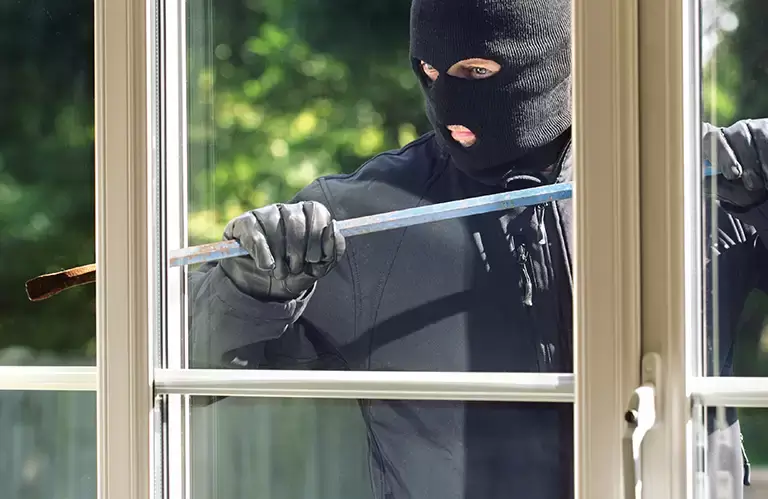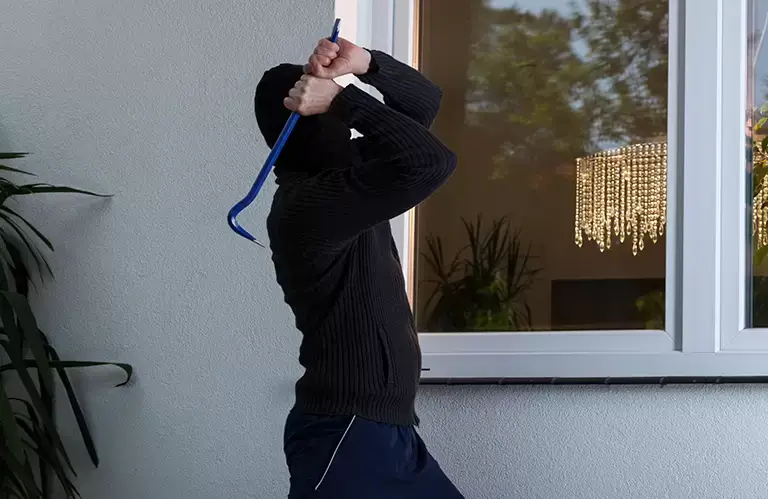LAMINATED GLASS
Laminated Glass is security glass that is manufactured by adhering two or more sheets of glass together with one or more flexible PVB interlayer(s).
AIS SECURITYGLAS
A range of laminated glass with specialised PVB interlayers to provide a high level of intrusion resistance from burglar attacks.Features and Benefit
- Provides Level 2 and Level 3 protection from burglar attacks.
- Eliminates the need for grills or shutters, without compromising on safety.
- In the unlikely event of breakage, the PVB interlayer acts as an extra layer of protection.
- Effectively reduces sound for better acoustic performance.
Applications
- Windows
- Roof Lights
- Canopies
- Domes
- Skylights
- Glass Lifts
Frequently Asked Questions
Laminated glass is a type of safety glass made by bonding two or more layers of glass together with a special interlayer, usually PVB (polyvinyl butyral). This interlayer holds the glass layers together even if they break, reducing the risk of injury from sharp glass shards. The process involves carefully sandwiching the interlayer between the glass sheets and then applying heat and pressure. This creates strong, durable glass that is ideal for buildings, offering high safety, security and added protection against external forces.
Laminated glass for construction offers enhanced security due to its layered construction, where multiple glass sheets are bonded together with a strong interlayer. Even if the glass is broken, the interlayer holds the pieces in place, making it difficult for intruders to force their way in and reducing the risk of injury from sharp shards. This makes laminated glass an ideal choice for protecting homes, offices and commercial buildings.
In addition to safety and intrusion resistance, it adds durability against impacts, provides some fire resistance, and helps reduce noise from outside, creating a more secure and comfortable indoor environment.
Laminated safety glass is widely used in applications where safety, security and durability are essential. It is commonly installed in windows and doors of homes, offices and commercial buildings. It is also used in glass facades, skylights, balustrades, partitions and shopfronts. Laminated glass is typically also ideal for areas prone to storms, high winds, or accidental impacts because it holds together when broken, preventing dangerous shards from causing injury. Its sound-insulating properties, protection against forced entry and enhanced structural strength make it a preferred choice for residential, commercial and public spaces where both safety and comfort are priorities.
The thickness of laminated glass for burglary or intrusion resistance depends on the required level of protection. The tear and penetration resistance of a PVB interlayer helps make laminated glass for security resistant to intrusion. For basic protection, 6.38 mm thick laminated glass for safety can help secure residences and shop windows against vandalism and ‘smash and grab’ attempts. Additionally, by incorporating extra layers of PVB into the laminated composition, increased penetration resistance can be achieved. For higher-risk areas, thicker laminated glass is recommended as it offers stronger resistance against forced entry while keeping the glass layers bonded to prevent injury from shards. The exact thickness should be chosen based on the building’s security needs and local safety requirements.
If architectural laminated glass breaks, the PVB interlayer keeps the glass layers bonded together, preventing them from shattering into sharp, dangerous pieces. Cracks may appear on the surface, but the glass largely stays in place, maintaining safety, security and structural integrity. This feature not only reduces the risk of injury but also continues to protect against intrusions, wind and accidental impacts. Because of this, laminated glass is a safer and more reliable choice than ordinary glass for homes, offices, commercial buildings and public spaces where both safety and durability are important.
Laminated glass and tempered glass are both safety glasses, but they differ in how they’re made and how they perform.
- Laminated glass is created by bonding two or more glass layers with a PVB interlayer, which keeps the glass pieces together if it breaks. This makes it ideal for security, sound insulation, and UV protection, as it offers enhanced UV protection.
- Tempered glass is made by rapidly heating and cooling glass to increase its strength. It is about four to five times stronger than regular glass and can handle high temperatures better. When it breaks, it shatters into small, blunt pieces that are less likely to cause injury. However, unlike laminated glass, it doesn’t stay in place or offer the same level of intrusion resistance. In short, laminated glass is preferred for areas that need extra safety, sound control, and UV protection (like skylights, facades, and storefronts), while tempered glass is better suited for impact-heavy or heat-exposed areas like doors, shower enclosures, and partitions.
Yes , laminated glass are generally more expensive than regular glass because of its multi-layered structure and advanced manufacturing process. It involves bonding two or more glass sheets with a PVB interlayer under heat and pressure, which adds to the cost. However, the higher price comes with long-term benefits such as improved safety, sound insulation, UV protection and security against break-ins. While regular glass is cheaper upfront, laminated glass sheets offers greater durability and protection, making it a more valuable investment for homes, offices and commercial spaces.



